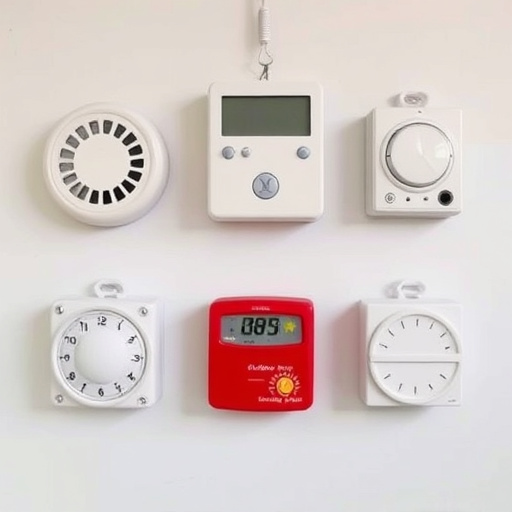Personal Defense Sirens and Pepper Spray offer distinct advantages for self-protection. Sirens use high-decibel noise to startle attackers over a wider area, ideal in public spaces. Pepper spray causes temporary incapacitation through eye irritation, but has short range and effectiveness dependent on application. Choice depends on personal preference, threat level, and desired outcome, with each tool suited for different scenarios and safety needs.
Personal protection is an essential aspect of our daily lives, especially in uncertain times. This comprehensive guide explores personal defense devices with a focus on audible alarms, their effectiveness, and unique features like the Personal Defense Siren vs. pepper spray. Understanding these tools can empower individuals to make informed choices, ensuring they’re prepared for unexpected situations. From the power of sound to crucial factors in selection, this article covers all you need to know about effective personal protection.
- Understanding Personal Defense Devices: A Comprehensive Overview
- The Power of Sound: Exploring Audible Alarms' Effectiveness
- Pepper Spray vs. Personal Defense Siren: Features and Comparisons
- Choosing the Right Tool: Factors for Effective Personal Protection
Understanding Personal Defense Devices: A Comprehensive Overview
Personal defense devices are tools designed to protect individuals from potential harm, offering a sense of security in various situations. These range from simple noise-making tools like personal alarm systems to more specialized equipment such as pepper spray and stun guns. When considering options for self-defense, many individuals find themselves weighing the merits of a Personal Defense Siren versus Pepper Spray.
A Personal Defense Siren is typically a high-decibel alarm that emits a loud, piercing sound to startle and deter potential attackers. Its primary function is to attract attention and create a momentary distraction, allowing the user to escape or seek help. On the other hand, pepper spray is an irritant designed to temporarily incapacitate an attacker by causing painful eye irritation and difficulty breathing. The choice between these two largely depends on individual preferences, the specific threat level, and the intended outcome in a dangerous situation.
The Power of Sound: Exploring Audible Alarms' Effectiveness
In the realm of personal protection, sound can be a powerful tool. Audible alarms have emerged as a popular and effective defense mechanism, especially in situations where immediate attention is required. When it comes to self-defense, the traditional pepper spray and personal defense sirens present distinct yet compelling options. Pepper spray offers a direct physical obstacle, temporarily incapacitating an assailant through irritation and pain. In contrast, audible alarms leverage the power of sound to startle and deter potential threats.
The effectiveness of these devices lies in their ability to create a sense of fear and unpredictability. A well-loud and distinct alarm can draw attention, alert nearby individuals or authorities, and disrupt an attacker’s momentum. Unlike pepper spray, which requires direct contact, audible alarms offer a non-lethal yet impactful response, making them versatile tools for various personal defense scenarios. Their reliability and ease of use make them accessible options for individuals seeking to enhance their safety measures.
Pepper Spray vs. Personal Defense Siren: Features and Comparisons
When it comes to personal protection, both pepper spray and personal defense sirens offer unique advantages in scary situations. Here’s a breakdown of their features and comparisons to help you choose the best option for your safety needs.
Pepper spray is a non-lethal self-defense tool designed to cause temporary blindness, coughing, and congestion in the target, making it difficult to move or breathe. It’s easy to use—just aim and spray—and its effects can give you valuable time to escape. However, pepper spray has a limited range, typically around 2-3 meters, and its effectiveness depends on proper application. On the other hand, personal defense sirens are powerful audio tools that emit a loud, piercing sound designed to startle and deter potential attackers. They offer a non-violent approach, with a range of up to 120 decibels, which can draw attention and scare off assailants. Sirens are convenient to carry and easy to activate, often with a simple press of a button. While not physically harmful, their high pitch might not always be effective against aggressive or intoxicated individuals.
Choosing the Right Tool: Factors for Effective Personal Protection
When considering personal protection devices, it’s crucial to understand that each has its strengths and weaknesses. A Personal Defense Siren and Pepper Spray are two popular options but cater to different needs. The siren offers a high-decibel alarm that can attract attention and deter potential threats quickly, making it ideal for public spaces or situations where loud noise is acceptable. In contrast, pepper spray is more suitable for close-quarters combat, temporarily incapacitating an attacker with a painful sting.
Choosing between these tools depends on your specific circumstances. If you’re looking to make a loud statement and alert nearby bystanders, a siren could be the better choice. On the other hand, pepper spray is more discreet and effective in situations where direct confrontation is likely. Considering factors like range, ease of use, legal implications, and personal comfort will help you select the right tool for your safety needs.
Personal protection devices with audible alarms, such as the Personal Defense Siren and pepper spray, offer effective deterrents in potentially dangerous situations. While each has unique features, choosing the right tool depends on individual needs and preferences. In terms of Personal Defense Siren Vs Pepper Spray, sirens excel at drawing attention and scaring off assailants through loud, piercing sounds, while pepper spray focuses on temporarily incapacitating the attacker. Ultimately, both can serve as powerful personal protection tools when used appropriately.
